First World War battlefield sites
Anniversaries: 18 March Çanakkale Day (Turkish), 25 April ANZAC Day
Gallipoli is one of those unusual places where the national stories of three countries come together and don’t so much clash as settle down comfortably alongside each other.
The historic events that took place on the peninsula across the Dardanelles from Çanakkale may be sliding into history now that the last men who took part in them have died, but on 25 April they always feel as if they had happened only yesterday as the crowds, predominantly made up of Australians and New Zealanders, stand in silence to listen to recollections of what they call the Gallipoli Campaign. Something similar will already have happened weeks earlier on 18 March when the Turks gather to commemorate what they prefer to call the Battle of Çanakkale.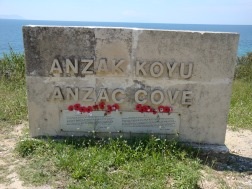
The events that took place at Gallipoli during the First World War told a story of imperial hubris, as British generals drew up a plan to capture the Dardanelles and the access they offered to Istanbul by fighting their way through at Gallipoli.
Things started to go astray right from the start when the ships, carrying a mixed contingent of Allied soldiers with a majority of Australians and New Zealanders (the ANZACs), landed in the wrong place. The result was a series of hard-fought battles that only ended after nine months with Allied defeat and withdrawal. By then almost 100,000 men had lost their lives. Many, many more had been wounded.
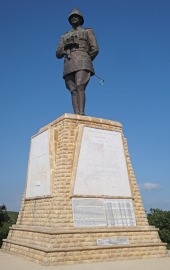 The commander of the troops against whom the ANZACs fought was Mustafa Kemal who went on to become Atatürk. Gallipoli is therefore important to the Turks as one of the staging posts in the rise to power of the father of the Turkish Republic. At the same time, for the ANZACs Gallipoli is seen as a turning point, the moment when they finally started to toss aside deference to their old colonial masters (i.e. Britain) and start building their own national stories.
The commander of the troops against whom the ANZACs fought was Mustafa Kemal who went on to become Atatürk. Gallipoli is therefore important to the Turks as one of the staging posts in the rise to power of the father of the Turkish Republic. At the same time, for the ANZACs Gallipoli is seen as a turning point, the moment when they finally started to toss aside deference to their old colonial masters (i.e. Britain) and start building their own national stories.
What happened at Gallipoli is sometimes described as the last “gentleman’s war”, with both sides viewing each other with respect despite the appalling conditions in which they were forced to fight. That respect, as well as the poignancy of sending men who had no personal grievances to fight each other, is highlighted in the grainy film The Fatal Shore, screened nightly in Çanakkale’s hotels and backpacker hostels.
For every person who relishes exploring battlefields, there is probably at least one more who hates the idea. But Gallipoli is different, not just because the various sites are well preserved and documented, but also because the peninsula as a whole is a very beautiful place fringed with beaches where walking or cycling from one site to another is a pleasure in itself.
There is a new modern museum for Gallipoli. However, I was shocked to see a huge TV screen in front of it showing images of battle almost as if they were entertainment. In the rush to exploit Gallipoli’s importance an element of theme parkery seems to be becoming more and more evident.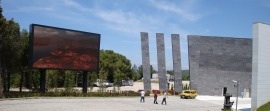
ANZAC Day
What started out in the 1980s as a relatively small ceremony to commemorate the dead has, over time, swollen in size and taken its slightly incongruous place on the “festival” calendar, slotted into travellers’ diaries alongside the Running of the Bulls in Pamplona and the Munich Beer Festival as a must-see without which any Antipodean tour of Europe would not be complete.
Fortunately, the Turks remember the Çanakkale War on 18 March. Were that not the case the battlefield sites would be completely overrun every April.

Down Under they’re starting to question whether the best way to commemorate the war dead really is to overwhelm the scene of their sacrifice in this way. The Lonely Planet guidebook once even dared to suggest the unsuggestable: that the best way to ensure a future for the battlefield sites might be “to do the ‘unpatriotic’ thing and stay away, at least on 25 April.”
Assuming you don’t mind crowds and really want to show your solidarity with everyone else at the dawn services, there’s no shortage of companies queuing up to help you get there and back with the least possible hassle. It goes without saying that all the best accommodation will have been booked up months in advance.
Don’t be surprised if you have to stay some distance away from Gallipoli, maybe even as far away as Keşan in Thrace.
And don’t expect everything to run smoothly – if there’s one day in the year when the best-laid plans can come unstuck it has to be 25 April.
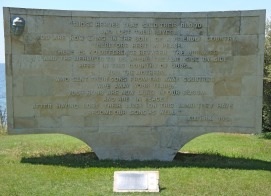 Most poignant words
Most poignant wordsLone Pine
Quinn’s Post
57 Regiment Cemetery
The Nek
Chunuk Bair
Cape Helles British Memorial
Çanakkale Martyrs’ Memorial
Sleeping
Most people will want to stay in Çanakkale or Eceabat although there are also a few hotels and pensions on the Gallipoli peninsula near Abide.
Transport info
There are regular buses from İstanbul to Çanakkale. The journey has been shorted by the advent of the Çanakkale 1915 Köprüsü (Bridge).
Travel agencies about town offer excellent tours of the battlefields.
Some organised tours from İstanbul let you continue on from Çanakkale to Selçuk for Ephesus rather than going straight back to the city.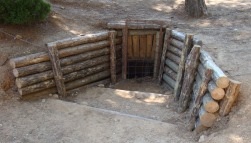
TJs Tours Tel: 0286-814 3121, www.anzacgallipolitours.com
Hassle Free Travel Tel: 0286-213 5969, hasslefreetour.com
Trooper Tours Tel: 0286-217 3343, www.troopertours.com
Crowded House Tours Tel: 0286-814 1565, www.crowdedhousegallipoli.com


